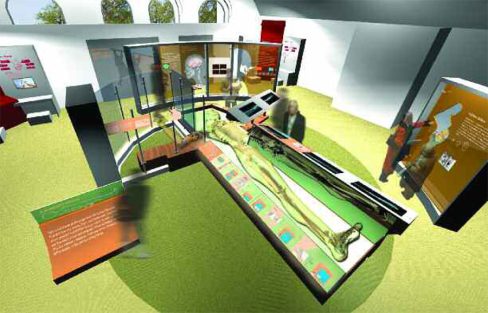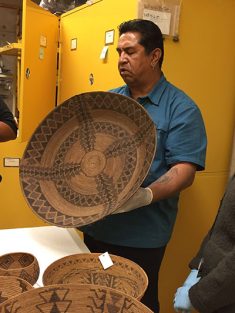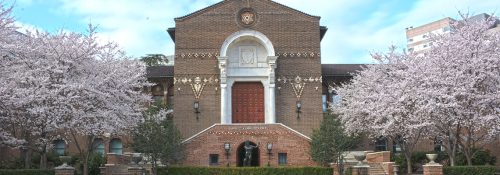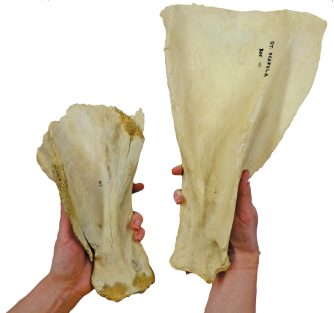Vol. 29 / No. 1
By: Alan Mann and Janet Monge
Technology of Casting
Making a Mold A mold of most fossil bones is made of two or more parts. When the design of […]
View ArticleVol. 29 / No. 1
By: Alan Mann and Janet Monge
Reproducing Our Ancestors: The University Museum's Casting Program
A hundred and thirty-one years ago, quarry workers in the Neander Valley (“Tal” in German) came across the mineralized remains […]
View Article
Vol. 34 / No. 1-2
By: Janet Monge
Victims of the Quake
An almost complete absence of human remains trapped in the destruction level of the Sanctuary argues that effectively nothing in […]
View Article
Vol. 41 / No. 3
By: Janet Monge and Alan Mann
A New View of a Neandertal Fossil Bone Collection: Science & Archaeology
The Neandertals are among the most enigmatic of our earlier relatives. With their large browridges, low foreheads, and projecting faces […]
View Article
Vol. 43 / No. 1
By: Janet Monge
Researching the Origins of Swahili Coast Inhabitants
The end of the 10th century marked many changes in the way archaeological and physical anthropological research is conducted. Most […]
View ArticleVol. 45 / No. 3
By: Robert W. Preucel, Lucy Fowler Williams, Stacey O. Espenlaub and Janet Monge
Out of Heaviness, Enlightenment: NAGPRA and the University of Pennsylvania Museum of Archaeology and Anthropology
On September 29,2000, John Johnson of the Chugach Alaska Corporation arrived in Philadelphia to take formal possession of ancestral Eskimo […]
View Article
Vol. 50 / No. 1
By: Janet Monge and Alan Mann
Surviving: A Lightning Rod: Exhibit Notes
“The exhibition promises to break new ground as the first of its kind to address aspects of human evolution in […]
View Article
Vol. 50 / No. 3
By: Emily S. Renschler and Janet Monge
The Samuel George Morton Cranial Collection: Historical Significance and New Research
Update on the Morton collection For updates on the Museum’s work towards the repatriation and burial of the Morton Collection, […]
View Article
Vol. 50 / No. 3
By: Janet Monge
The Morton Collection and NAGPRA
Update on the Morton collection For updates on the Museum’s work towards the repatriation and burial of the Morton Collection, […]
View Article
Vol. 50 / No. 3
By: Janet Monge
ORSA: The Open Research Scan Archive
Update on the Morton collection For updates on the Museum’s work towards the repatriation and reburial of the Morton Collection, […]
View Article
Vol. 58 / No. 1
By: Lucy Fowler Williams, Stacey O. Espenlaub and Janet Monge
Finding Their Way Home: Twenty-five Years of NAGPRA at the Penn Museum
On November 2, 2015, Mr. Lalo Franco and Mr. Pete Alanis of the Tachi Yokut Tribe of the Santa Rosa […]
View Article
Vol. 58 / No. 2
By: Janet Monge
Mummies Beyond the Grave: An Introduction to Mummy Studies around the World
Over 20 years ago, I got hooked on mummies. It began when we first x-rayed the many South and North […]
View Article
Vol. 61 / No. 2
By: Marie-Claude Boileau, Moritz Jansen, Janet Monge, Katherine Moore and Chantel White
In the Labs: Celebrating Five Years of CAAM
AS A JOINT ENDEAVOR between the Penn Museum and the University of Pennsylvania School of Arts and Sciences, the Center […]
View Article